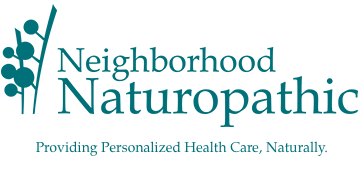
Bone density becomes of concern for aging patients – especially those who have experienced any type of significant or repeated breaks.
Read on as Dr. Litchy-Miller answers questions about osteoporosis and how naturopathic medicine can help someone struggling both mentally and physically with this issue.
What is the difference between osteoporosis and osteopenia?
Osteoporosis AND osteopenia are conditions characterized by low bone mass resulting in decreased bone strength, and increased skeletal fragility and risk of fracture.
However, the difference between the two is the T-score that results from a DEXA (Dual-energy X-Ray) scan. Osteopenia will have a T-score of -1 to -2.5, while osteoporosis will have a T-score of -2.5 or lower.
Can your bones spontaneously break?
Unfortunately, spontaneous bone breakage can occur in patients with particularly weak and brittle bones. Microfractures, as they are often called, are small or minute fractures that have potential to create larger fractures.
How do I stop that cycle of fear related to microfractures and movement?
Understandably, experiencing a microfracture or fracture while performing a routine movement can produce overall fear and anxiety about moving. Overall, the best way to stop the cycle of fear is by educating yourself. Knowledge is power, and if you understand the if’s, and’s, how’s and why’s regarding fracture, and your anxiety and fear around it, you will be better prepared to address it head on with proper tools and knowledge from your Naturopathic Doctor.
How would a naturopath address the mental health aspect of having osteoporosis?
Naturopathic Doctors really do have fantastic tools to address mental health. Here are a few:
- Botanical medicine is one of my favorite modalities because of its overall safety, efficacy, and ability to modify potency to the patient. There are some fantastic forms of botanical medicine known as “nervines” that may help “calm the nerves”.
- The “OAT” test (organic acid test) assesses neurotransmitter support or imbalance. This test will take a deep dive into how your body is producing and breaking down neurotransmitters, or not. Having a detailed look at how one’s biochemistry is preforming can provide an in-depth approach to providing effective mental health support.
- Physical therapy, CBT (cognitive behavioral therapy), or EMDR (eye movement desensitization and reprocessing) might help the patient overcome and/or heal from their traumatic experience.
- Simple exercises like meditation, gentle yoga, journaling, and discussing fears and concerns at an appointment.
Is there supplementation that helps strengthen bones or muscles?
I often start by evaluating what nutrients my patients with osteoporosis and osteopenia are getting through their diet. I might send them home with a diet diary and a list of foods with their calcium content per serving. If they are not getting enough nutrients through their diet, we supplement accordingly.
Calcium is not the only nutrient needed for bone health! Your body needs other nutrients such as Vitamin D, phosphorus, magnesium, and vitamin C (to name a few) in order to remodel and maintain healthy bones!
With over 42% of the US populations living with Vitamin D deficiency specifically, I always recommend diagnostic testing to my osteoporosis and osteopenia patients to evaluate specific nutrient levels correlated to bone health so I can recommend supplementation that is specific to their unique needs.
Healing and restoring gut health may be the first thing to be addressed and conquered for many patients living with osteopenia and osteoporosis. If your gut is imbalanced, or if you live with conditions such as IBS, Crohn’s, or ulcerative colitis, you may not be properly absorbing the nutrients needed to create and protect healthy bones.
Does movement cause or prevent pain?
Movement can BOTH cause and prevent pain.
PREVENTION OF PAIN:
If you have osteoporosis, you know your bones are more fragile and likely to fracture. Because of this, you are going to want to protect them. If you strengthen and build muscle, you are going to have more tissue supporting your (fragile) bones, thus decreasing you risk of fracture. You will also be supporting your balance, which can help decrease your chance of a fall resulting in a fracture (which can be VERY painful).
CAUSE OF PAIN:
While there are many reasons movement can cause pain, the most common cause, in general, is inflammation. Inflammation can be the result of many things, including a sedentary lifestyle! If you are relatively sedentary, or are new to exercise, pain with movement should almost be expected since your body is doing something it is not used to. Remember, you know your body best. If you are experiencing pain with movement that you feel is not normal, talk to your doctor about it!
What kind of exercises do you recommend?
The best kind of exercise for osteoporosis patients is going to be weight bearing exercise. This type of exercise will have the greatest effect in inducing adaptive bone remodeling, and there are some great clinical studies to support this.
One of the more powerful studies looked at an eight-month high intensity resistance training program among 101 postmenopausal women with low, and very low bone mass, some of whom (28%) had already experienced bone fracture. Outcomes showed that compared to the control group that performed a home-based low intensity program, the intervention group showed lumbar spine and femoral neck bone density changes of 2.9 and .3 percent, versus -1.2 and -2.0 percent for the control group (Watson).
Here are some exercise recommendations I give to my osteoporosis patients:
- WALKING! (Even just 10 minutes a day)
- Swimming
- Water aerobics
- Strength training
- Pilates
- Tai Chi
It goes without saying that Movement Matters when it comes to preventing bone loss!
Naturopathic medicine is medical practice based on the philosophy that each individual possesses the unique and innate ability to heal itself naturally. Neighborhood Naturopathic uses holistic and natural medicine, proven treatments and alternative therapies to help your body heal. If you live in the Minneapolis/ St. Paul area and are curious about a naturopathic approach to your health or have questions about nutritional supplements that might support your overall wellness, click here to schedule or call (612) 259-8529.
If you are interested in learning more ways that naturopathic medicine supports health and wellness in your life, sign up for our monthly newsletter where we give insider tips and tricks about living well.
RESOURCES:
Watson, Steven L et al. “High-Intensity Resistance and Impact Training Improves Bone Mineral Density and Physical Function in Postmenopausal Women With Osteopenia and Osteoporosis: The LIFTMOR Randomized Controlled Trial.” Journal of bone and mineral research : the official journal of the American Society for Bone and Mineral Research vol. 33,2 (2018): 211-220. doi:10.1002/jbmr.3284
